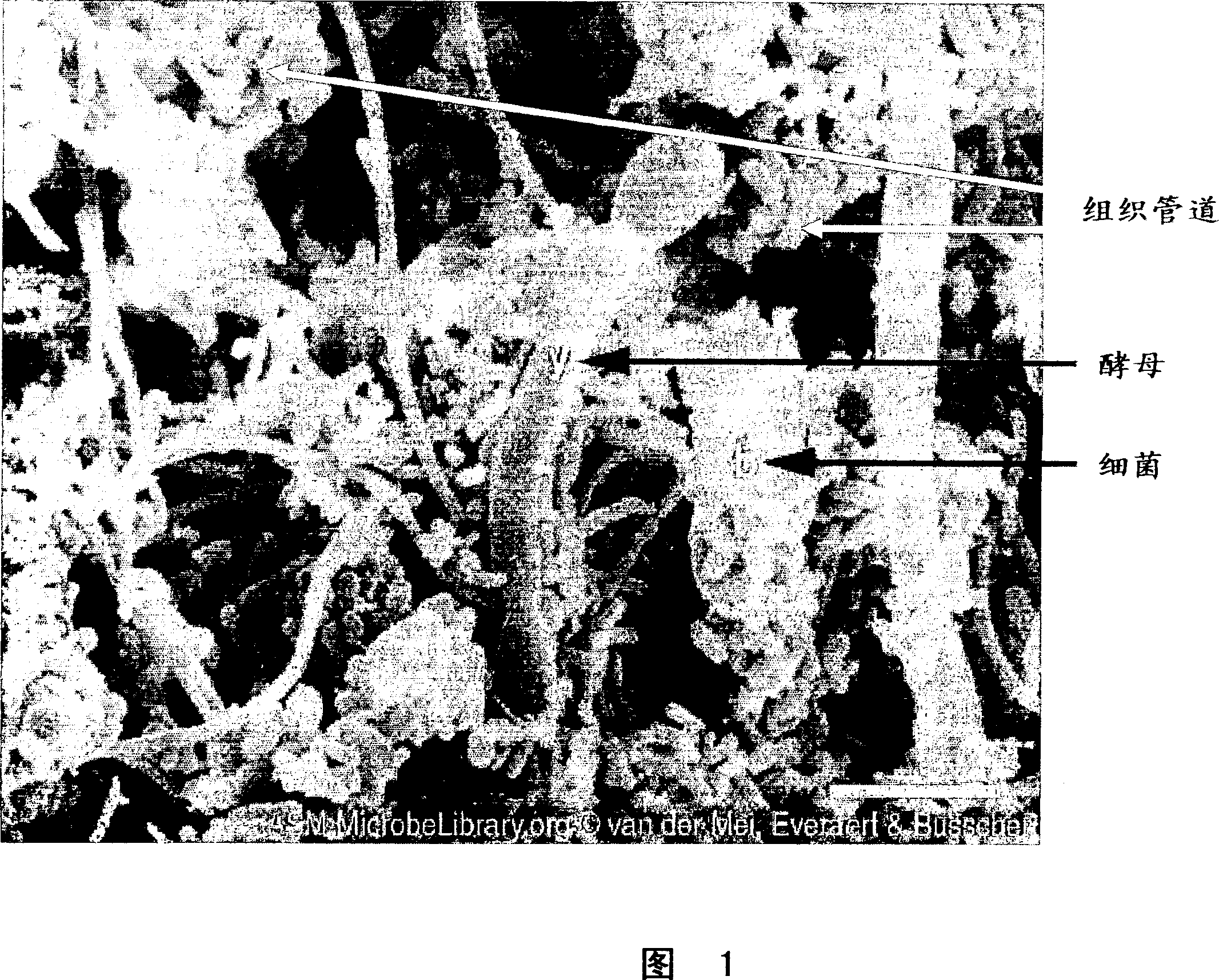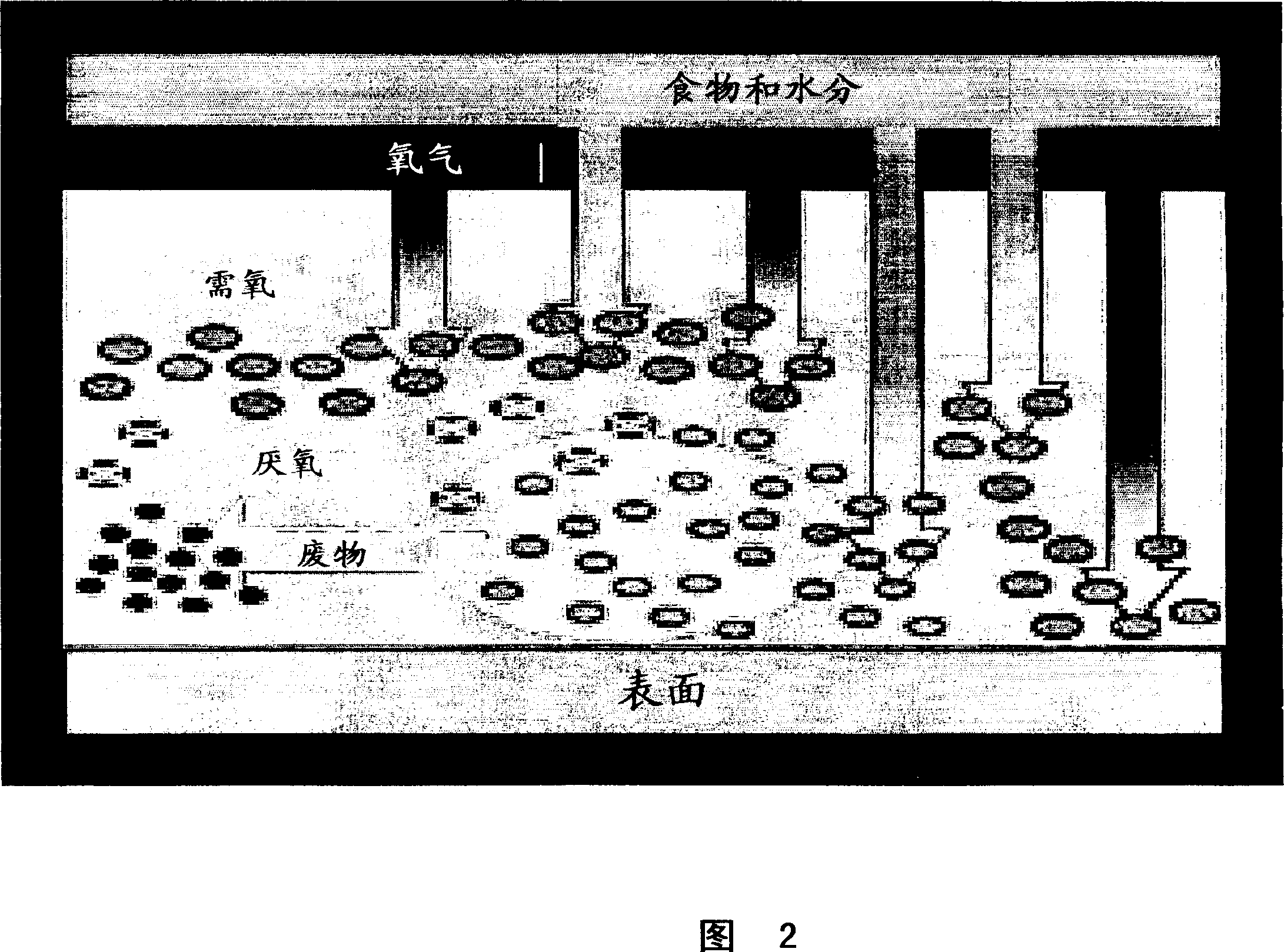Methods and compositions for preventing biofilm formation, reducing existing biofilms, and for reducing populations of bacteria
A composition and biofilm technology, applied in botany equipment and methods, detergent compositions, chemical instruments and methods, etc., can solve the problems of company reputation damage and food processing enterprises spending a lot of money
- Summary
- Abstract
- Description
- Claims
- Application Information
AI Technical Summary
Problems solved by technology
Method used
Image
Examples
Embodiment 1
[0096] Example 1: Cell-free fermented product
[0097] As shown in Figure 5, cell-free fermentations of four bacteria were prepared. The bacterial species used to produce the ferment were Lactococcus lactis subsp. lactis (ATCC #11955), Pediococcus lactis (ATCC #25742), Lactobacillus acidophilus (ATCC #4356) and Lactobacillus sake (ATCC #15521). A culture of each bacterium was placed on skim milk powder and incubated at 37°C for 18h. After culturing, the whey fraction is separated from the curd fraction. The whey was then centrifuged at 25,000 rpm for 10 minutes. It was then filtered using a Millipore (Billerica, MA) sterile filter with a pore size of 0.2 μm. In this way a sterile cell-free ferment is obtained.
Embodiment 2
[0098] Embodiment 2: Control
[0099] This embodiment is shown as an example in FIG. 6 . Five stainless steel sheets (1in 2 ;6.5cm 2 ) into a sterile petri dish, and sterile brain heart infusion (brain heart infusion, BHI) medium and LM were added to the petri dish. Incubate at 35°C for 6h to allow LM to attach to the surface of the steel sheet. Remove the stainless steel piece from the Petri dish using sterile forceps and rinse carefully with 1% sterile peptone medium. Then put the steel sheet on a Petri dish containing 1% sterile peptone medium and seal it with Parafilm membrane, and incubate at 35°C for 16h to grow LM biofilm. The steel piece was then shaken in a sterile urine cup with sterile glass spheres and 10 mL of Butterfield's phosphate buffered saline to remove biofilm on the steel piece. Samples were diluted appropriately, plated using complete plate count agar and incubated at 35°C for 24h and counted.
Embodiment 3
[0100] Embodiment 3: Encapsulation research
[0101] This embodiment is exemplarily shown in FIG. 7 . Five stainless steel sheets (1in 2 ;6.5cm 2 ) into a sterile cell-free fermentation of Pediococcus lactis, Lactococcus lactis subsp. lactis, Lactobacillus acidophilus and Lactobacillus sake and kept at room temperature (about 20° C.) for 1 h. The steel piece was then placed in a sterile petri dish and sterile brain heart infusion medium and LM were added to the dish. Incubate at 35°C for 6 hours to allow LM to attach to the surface of the steel sheet. Remove the stainless steel piece from the Petri dish using sterile forceps and rinse carefully with 1% sterile peptone medium. Then put the steel sheet on a petri dish containing 1% sterile peptone medium and seal it with Parafilm membrane, and incubate at 35°C for 16h to grow LM biofilm. The steel piece was then shaken in a sterile urine cup with sterile glass spheres and 10 mL of Butterfield's phosphate buffered saline to ...
PUM
 Login to View More
Login to View More Abstract
Description
Claims
Application Information
 Login to View More
Login to View More - R&D
- Intellectual Property
- Life Sciences
- Materials
- Tech Scout
- Unparalleled Data Quality
- Higher Quality Content
- 60% Fewer Hallucinations
Browse by: Latest US Patents, China's latest patents, Technical Efficacy Thesaurus, Application Domain, Technology Topic, Popular Technical Reports.
© 2025 PatSnap. All rights reserved.Legal|Privacy policy|Modern Slavery Act Transparency Statement|Sitemap|About US| Contact US: help@patsnap.com



